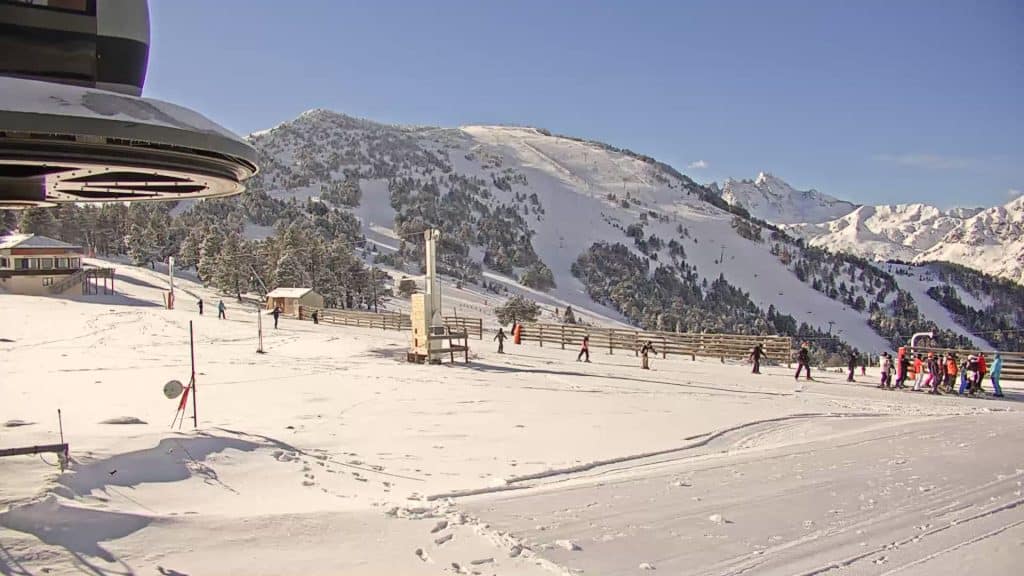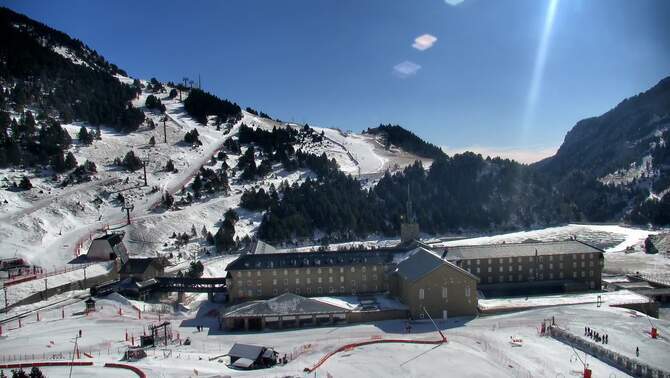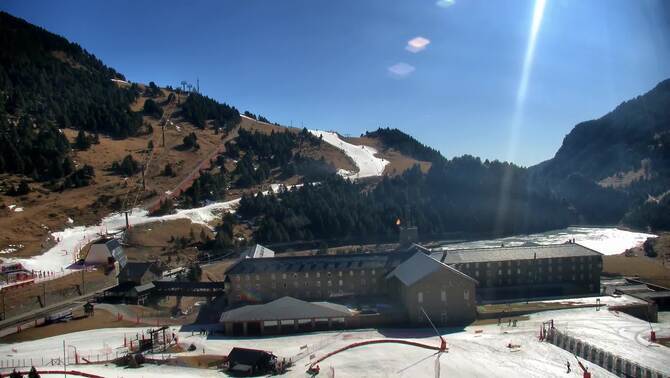The picturesque Pyrenees mountain range has long been a haven for ski enthusiasts from around the world, offering breathtaking slopes, stunning landscapes, and a thriving economy for local communities. However, the future of skiing in the region is under threat due to the impact of climate change. Rising temperatures and decreasing snowfall over the last few years are jeopardising the winter season and threatening the tourism sector.
—
Traditionally, skiing has provided a significant boost to the local economy in the Pyrenees. For decades, tourists have been flocking to the region during the winter months, leading to an economic boost for hotels, restaurants, and small businesses alike. Ski resorts also provide employment opportunities for local communities, ensuring livelihoods for many.
The winter season, which typically runs from December to Easter, allows for a sustainable flow of visitors and ensures the viability of these businesses. The snow also serves as a vital resource for the environment, acting as a natural reservoir for the summer months, not only by supplying water to surrounding communities but also hydrating animals and plants.
Unfortunately, the current situation in the Pyrenees is dire. The relentless rise in temperatures over the last few decades has progressively shortened the winter season, leading to a decline in visitors and economic instability in the region. Snowfall patterns have become more irregular, resulting in a lack of the natural snow needed to maintain ski runs and forcing ski resorts to heavily rely on machine-made snow. Ski resorts that once thrived are now struggling to maintain their operations, as they battle to attract tourists without the guarantee of a reliable snow cover.
You might also like: The Uncertain Future of the Olympic Winter Games
Hottest Ski Season on Record
The winter season 2023-2024 seemed to be starting well. Thanks to early snowfall in November and a significant drop in temperatures that allowed for machine-made snow production, some ski resorts – including Ordino-Arcalís (Andorra), Porté-Puymorens (France), and Baqueira Beret (Spain) – decided to open ahead of schedule. Little did they know that things would change rapidly.
Resort managers should have waited a little longer to open and preserve the available snow to create a good base layer for the months to come. No one was prepared for a sudden rise in temperatures and a lack of precipitation in December that would persist throughout the whole season, forcing them to close some plants much earlier than usual.
The beginning of 2024 marked a new low for Southern Europe in terms of temperature records. Ski resorts in the Pyrenees experienced temperatures up to 12C above the average on January 25, a phenomenon never seen before in the region. At the ski resort of Candanchú, Spain, located at over 1,500 metres of altitude, the mercury reached 18.4C, in Les Salines, near Ordino-Arcalís, Andorra, it went up to 22.6C; and at Formiguères’s ski resort in France, temperatures reached 20.7C.

Ski resort managers were in shock and deeply concerned.
“We have positive temperatures, even at 2,600 metres of altitude, the highest point of the resort,” said Émilie Mothes, director of Piau-Engaly, the highest ski resort in the French Pyrenees. “At night, the thermometer currently reads between 2 and 4C,” too high to make artificial snow.
On January 21, 2024, the ski resort of Beille et Chioula in France announced it would shut operations citing lack of snow and elevated temperatures.
At present, the snow reserve in the Pyrenees is only 56% compared to the average of the last five years. Even from afar, it is difficult to spot any trace of snow on the Pyrenees, as depicted in the following historical webcam images.
Le Chioula sector (alt. 1,600m) at the Espace Nordique des Vallées d’Ax ski resort, France


Saquet sector (alt. 2,000m) at the Ax 3 Domaines ski resort, France


Vall de Núria (alt. 2,000 m) ski resort, Spain


Uncertain Times Ahead
The future of ski resorts in the Pyrenees remains uncertain. Whether the situation of winter 2024 is exceptional or not, there is a clear trend toward a widespread increase in temperatures.
“In all mountain regions of Europe, future climate change will lead to degraded snow conditions in ski resorts compared to the last decades,” said Samuel Morin, senior scientist at Météo France and France’s National Centre for Scientific Research.
If the current trend of rising temperatures and diminishing snowfall continues, ski resorts will have to explore alternative solutions to avoid collapse. Currently, most of them are investing in more efficient snow-making technologies but these measures can only provide temporary relief. For that reason, many ski resorts in the Pyrenees are starting to actively engage in sustainable practices – from investing in renewable energy sources to promoting eco-friendly tourism – as they strive to reduce their environmental impact and adapt to changing conditions.
Pyrenean ski resorts are facing unprecedented challenges and an uncertain future due to the impacts of global warming. The decrease in snowfall, irregular snow patterns, and rising temperatures all pose significant threats to the viability of these resorts and the local economy. Ski resort managers are faced with the difficult task of finding alternative solutions to mitigate the effects of climate change and ensure their operations remain sustainable. Only by actively adapting to these changing conditions can the Pyrenean ski resorts hope to continue providing a boost to the local economy and preserving the natural beauty of the region for future generations.
All photos in this article are screenshots of historical webcam images at different ski resorts in the Pyrenees. They were retrieved from the website infonieve.es
More on the topic: Europe’s Warmest Winter on Record Forces Closure of Ski Slopes


















